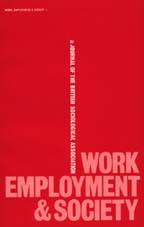Article contents
Imbalances in the GP Labour Market in the UK: Evidence from a Postal Survey and Interviews with GP Leavers
Published online by Cambridge University Press: 11 June 2002
Abstract
There is concern that the UK general practitioner (GP) workforce has declined relative to the expanding needs of a primary care-led NHS. Much of the debate about possible solutions within the profession and amongst medical workforce planners has focused on the need to raise medical school intakes and recruit more new GPs. However, other evidence shows that, as with medicine in general, a differential relationship exists in the GP labour market based upon socially ascribed characteristics. It follows that many already qualified GPs (e.g. women, ethnic minority and older doctors) are under-used in the context of generally accepted career structures. Hence, we would argue, part of the solution to workforce shortages lies in better retention and management of existing human resources. This paper first suggests a simple re-conceptualisation, which will help to frame a more sophisticated analysis than so far used for workforce planning of the nature of GP demand and supply. The framework is then used to explore the findings of the first ever national survey (n = 621) and follow-up interviews (n = 32) with a cohort of GP principal leavers. These showed that a variety of more flexible employment arrangements are needed in order to improve both GP recruitment and retention. In taking this approach, the paper also explores the potential implications of changing social trends for the structure of the GP profession.
- Type
- Original Articles
- Information
- Copyright
- 2001 BSA Publications Ltd
- 13
- Cited by


